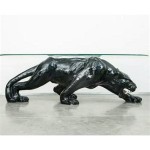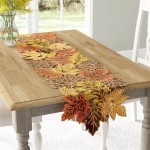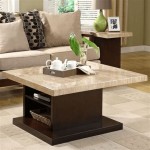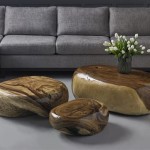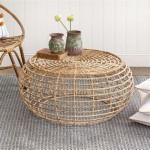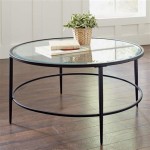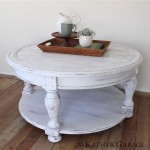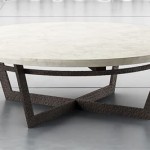Small Dressing Table Designs: Optimizing Space and Style
The dressing table, or vanity, remains a staple in many bedrooms, offering a dedicated space for grooming and personal care. However, modern living often necessitates clever space-saving solutions. Small dressing table designs provide the functionality of a traditional vanity without overwhelming smaller rooms. This article explores various designs and considerations for incorporating a small dressing table into diverse interior spaces.
The choice of a small dressing table involves careful consideration of available space, storage requirements, and desired aesthetic. Numerous designs cater to different needs and preferences, ranging from minimalist floating shelves to compact corner units. The style should complement the existing décor and enhance the overall ambiance of the bedroom.
Maximizing Functionality in Limited Spaces
One of the primary challenges in small spaces is maximizing functionality. Small dressing tables address this by incorporating multi-functional elements. A dressing table can serve as a dual-purpose piece, acting as a workspace or a bedside table when not in use for grooming. Design considerations might include a hinged top that conceals a mirror and storage compartments, or drawers that can hold both makeup and stationery.
Floating dressing tables are an excellent choice for saving floor space. Mounted directly on the wall, they create a sense of openness and provide ample legroom. These designs often feature a single drawer or shelf for essential items, minimizing visual clutter. The minimalist aesthetic aligns well with contemporary interiors and contributes to a clean, uncluttered look.
Corner dressing tables are specifically designed to fit snugly into corners, utilizing otherwise unused space. These designs often feature a triangular or curved tabletop, maximizing surface area while minimizing the footprint. They can incorporate drawers, shelves, and even integrated lighting to provide a functional and aesthetically pleasing grooming station. A notable advantage is their ability to create a dedicated zone within a small room without impeding movement.
Another strategy is to integrate a dressing table into existing furniture. For example, a wide drawer in a bedside table can be fitted with dividers and a flip-up mirror, instantly transforming it into a mini dressing table. This approach reduces the need for separate furniture pieces and optimizes the use of available space. Similarly, a narrow shelf above a chest of drawers can serve as a makeshift vanity area with the addition of a wall-mounted mirror.
Foldable dressing tables offer a highly versatile solution for extremely limited spaces. These designs typically feature a tabletop that can be folded down when not in use, creating a slim and unobtrusive profile. Some models also incorporate a built-in mirror and storage compartments that are concealed when the table is folded. This type of dressing table is ideal for shared spaces or rooms where flexibility is paramount.
Exploring Different Styles and Materials
The style of a small dressing table should complement the existing décor of the bedroom. Modern dressing tables often feature clean lines, minimalist designs, and neutral color palettes. Materials such as painted wood, metal, and glass are commonly used to create a sleek and contemporary look. These designs often prioritize functionality and simplicity, focusing on essential storage and a clear, uncluttered surface.
For those who prefer a more traditional aesthetic, small dressing tables crafted from solid wood with ornate detailing are available. These designs often feature curved legs, decorative knobs, and a vintage-inspired mirror. Darker wood finishes, such as mahogany or walnut, can add a touch of elegance and sophistication to the bedroom. Fabric-lined drawers and velvet-covered stools can further enhance the traditional ambiance.
Bohemian-inspired dressing tables often incorporate natural materials such as rattan, bamboo, and reclaimed wood. These designs typically feature a relaxed and eclectic aesthetic, with a focus on texture and visual interest. A macramé wall hanging, a collection of vintage perfume bottles, and a woven stool can complement the bohemian vibe. The color palette often includes earthy tones, such as terracotta, olive green, and mustard yellow.
Industrial-style dressing tables combine raw materials such as metal and wood to create a rugged and utilitarian aesthetic. These designs often feature exposed hardware, distressed finishes, and minimalist silhouettes. A metal frame, a reclaimed wood tabletop, and a simple stool can evoke the industrial aesthetic. The color palette typically includes neutral tones, such as gray, black, and brown.
The choice of materials also affects the durability and maintenance of the dressing table. Solid wood is a durable and long-lasting option, but it requires regular cleaning and polishing to maintain its appearance. Metal is another durable choice, but it can be prone to scratches and rust. Glass is easy to clean but can be fragile. The choice of material should consider both the aesthetic preferences and the practical needs of the user.
Optimizing Lighting and Storage Solutions
Proper lighting is essential for a functional dressing table. Natural light is ideal, but it is not always available, especially during the evening hours. Artificial lighting should be carefully chosen to mimic natural light and provide even illumination for makeup application and grooming. LED lights are a popular choice due to their energy efficiency and ability to produce a bright, natural-looking light.
Integrated lighting is a convenient option for small dressing tables. Some designs feature built-in LED strips around the mirror, providing direct and even illumination. Others incorporate adjustable spotlights that can be directed to specific areas of the face. The placement of the lights should minimize shadows and create a flattering and functional lighting environment.
Wall-mounted sconces are another option for dressing table lighting. These lights can be positioned on either side of the mirror to provide symmetrical and balanced illumination. Adjustable sconces allow the user to customize the direction and intensity of the light. The style of the sconces should complement the overall aesthetic of the dressing table and the bedroom.
The color temperature of the lighting is also an important consideration. Cool white light is ideal for makeup application, as it provides a clear and accurate representation of colors. Warm white light is more relaxing and flattering, but it may not be suitable for tasks that require precision. A combination of cool and warm white lights can be used to create a versatile lighting environment.
Adequate storage is crucial for keeping a small dressing table organized and clutter-free. Drawers are a popular choice for storing makeup, brushes, and other small items. Dividers and organizers can be used to maximize the space within the drawers and keep items neatly arranged. Shelves are useful for storing larger items, such as perfume bottles, hair products, and skincare products.
Hanging organizers can be used to store necklaces, bracelets, and other jewelry. These organizers can be hung on the wall or inside the cabinet door, saving valuable space on the tabletop. Clear acrylic organizers are ideal for storing makeup, as they allow the user to easily see and access the items. Stackable containers can be used to store cotton balls, cotton swabs, and other small supplies.
A stylish stool or chair is an essential component of a dressing table. The height of the stool or chair should be comfortable for the user, allowing them to sit upright and maintain good posture. Upholstered stools and chairs provide added comfort and can enhance the aesthetic of the dressing table. The style of the stool or chair should complement the overall design of the dressing table and the bedroom.
Mirrors play a vital role in the functionality of a dressing table. A large mirror provides a clear and unobstructed view of the face, while a smaller magnifying mirror is useful for detailed tasks, such as applying eyeliner or tweezing eyebrows. A tilting mirror allows the user to adjust the angle of the reflection, ensuring optimal visibility. The shape and style of the mirror should complement the overall aesthetic of the dressing table.
Consider a trifold mirror for a more comprehensive view. Trifold mirrors provide a panoramic perspective of the face, making it easier to see the sides and back of the head. These mirrors are particularly useful for styling hair and applying makeup evenly. Some trifold mirrors also feature built-in lighting, providing additional illumination for grooming tasks.

8 Latest Dressing Table Designs That You Must Know

The Ultimate Guide To Finding Your Dream Dressing Table Design Saraf Furniture

Perfect Small Dressing Table Design Ideas Decorpot

Buy Aberdeen Sheesham Wood Dressing Table With Mirror And Drawers Honey Finish 50 Off Wooden Street

14 Space Saving Pieces Of Furniture To Make The Most Your Small Home

Discover Small Dressing Table Designs For Compact Bedrooms

Perfect Small Dressing Table Design Ideas Decorpot

18 Dressing Table Design Ideas For Bedroom 2024

Dressing Table Designs For Small Bedroom Design Cafe

25 Wardrobe Design With Dressing Table Ideas For Your Stylish Space
Related Posts

